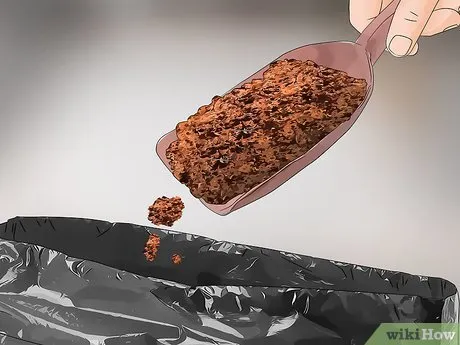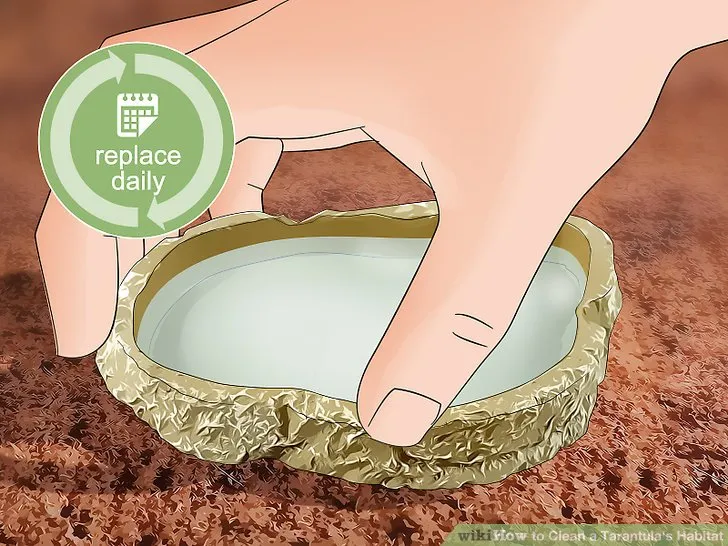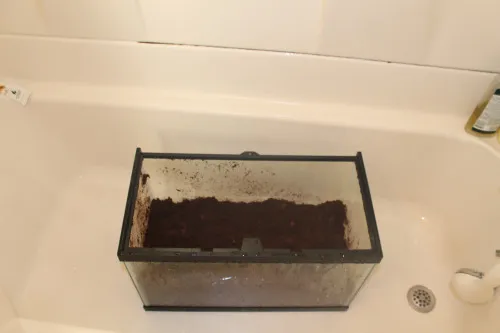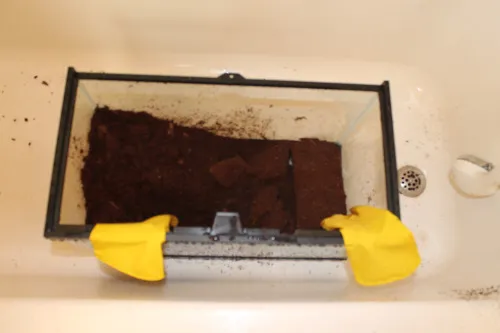Understanding Tarantula Tank Cleaning
Cleaning a tarantula tank is crucial for the health and well-being of your pet. Tarantulas, like all animals, produce waste, and their enclosures can accumulate uneaten food, molted exoskeletons, and other debris. Regular cleaning helps to eliminate these elements, reducing the risk of harmful bacteria, mold, and mites. A clean tank provides a healthier environment for your tarantula, allowing it to thrive and exhibit its natural behaviors. By understanding the importance of tank maintenance, you are taking the first step in becoming a responsible tarantula owner, ensuring a long and fulfilling life for your eight-legged friend. Proper cleaning not only benefits the tarantula’s physical health but also contributes to its overall psychological well-being, allowing it to feel safe and secure in its habitat.
Why Tank Cleaning is Essential
Tank cleaning is not just about aesthetics; it is a fundamental aspect of tarantula care. A dirty tank can quickly become a breeding ground for bacteria and other microorganisms, which can lead to respiratory infections and other health problems for your tarantula. It also helps to control the humidity levels within the enclosure, which is vital for the tarantula’s molting process and overall health. A well-maintained tank makes it easier to observe your tarantula’s behavior and identify any potential health issues early on. It also reduces unpleasant odors, making your home a more pleasant environment. Regular cleaning helps prevent the build-up of ammonia from waste products, which can be toxic to tarantulas. Investing time in proper tank maintenance is an investment in your tarantula’s health and happiness.
Impact of a Dirty Tank

A dirty tarantula tank can have several negative impacts on your pet’s health and well-being. High humidity levels combined with a dirty environment can promote the growth of mold and fungi, which can lead to respiratory infections. The accumulation of waste products can also attract pests such as mites, which can infest the tarantula and cause irritation and stress. In severe cases, a dirty tank can lead to bacterial infections that can be life-threatening. Moreover, a cluttered and dirty environment can stress your tarantula, affecting its appetite, activity levels, and molting cycle. Regular cleaning is thus crucial for preventing these issues and maintaining a healthy and happy tarantula. A clean tank allows for better air circulation and helps to regulate the microclimate, ensuring the tarantula’s overall well-being. (Image of a dirty tank)
Supplies Needed for Tank Cleaning
Gathering the right supplies is the first step towards an efficient tank cleaning process. You’ll need a clean container or tub to temporarily house your tarantula during cleaning. Prepare gentle cleaning solutions, such as diluted dish soap or a reptile-safe disinfectant. Ensure you have clean paper towels, a soft brush, and possibly a small scoop or spoon for removing substrate. Have a new supply of substrate ready to go, appropriate for your tarantula’s species. Depending on the tank’s contents, you may need items for cleaning decorations, such as a separate container to soak them in. Having these supplies on hand ensures that you can clean the tank quickly and safely, without disrupting your tarantula’s environment. It’s always recommended to have everything prepared before starting the cleaning procedure.
Choosing the Right Cleaning Tools
Selecting the right cleaning tools ensures you can thoroughly clean your tarantula tank without harming your pet or the environment. A soft-bristled brush is ideal for scrubbing the sides and bottom of the tank without scratching the surface. Avoid using harsh chemicals or abrasive scrubbers, as these can leave residue that could be toxic to your tarantula. A small scoop or spoon can be helpful for removing waste and uneaten food. If you have decorative items in the tank, a separate container for cleaning them is essential. Always choose cleaning tools that are easy to disinfect and sanitize after use. For substrate removal and replacement, a small shovel or trowel can also be very useful. Always opt for tools specifically designed for pet care to ensure the safety of your tarantula. (Image of the right cleaning tools)
Essential Cleaning Supplies

The essential cleaning supplies for a tarantula tank are straightforward but crucial. You’ll need a gentle cleaning solution, such as diluted dish soap or a reptile-safe disinfectant. Avoid using anything with strong fragrances or chemicals, as these can be harmful to your tarantula. Clean water is essential for rinsing the tank and accessories. Paper towels or soft cloths are needed for drying the tank and wiping down surfaces. Always have a fresh supply of appropriate substrate on hand. If you have decorative items in the tank, a separate container with clean water and a gentle cleaner will be helpful. Make sure your cleaning supplies are stored in a safe place, away from the reach of children or pets. Using the right supplies ensures that you can maintain a clean and healthy environment for your tarantula.
Step-by-Step Tarantula Tank Cleaning
Follow these step-by-step instructions for a safe and effective tank cleaning process. First, gather all your necessary supplies. Gently remove your tarantula from the tank and place it in a secure, clean container. Dispose of the old substrate, being careful not to disturb any molted exoskeletons or food remnants. Clean the tank thoroughly, using a gentle cleaning solution and a soft brush. Rinse the tank thoroughly with clean water, ensuring no cleaning residue remains. Clean all decorative items in the tank. Allow the tank and accessories to dry completely before reassembling. Place the new substrate in the tank and reintroduce your tarantula back into its clean habitat. Regular cleaning will help keep the tank pristine and make it a safe home for your pet.
Preparing for the Cleaning Process
Proper preparation is key to a successful tank cleaning. Before you start, gather all the necessary supplies in one place. Make sure you have a clean, escape-proof container to temporarily house your tarantula. Turn off any heating or lighting elements in the tank. Decide on the most appropriate location to clean the tank, ensuring you have enough space and a flat surface. Consider the humidity levels and temperature in your home during the cleaning process, ensuring the environment is suitable for your tarantula. Having everything ready beforehand will make the cleaning process more efficient and less stressful for both you and your pet. Always prioritize safety and cleanliness when preparing for a tank cleaning.
Removing the Tarantula Safely

Removing your tarantula safely is paramount during the cleaning process. Approach your tarantula calmly and gently. Depending on the species and temperament, you may choose to gently coax it into a secure container using a soft brush or by carefully scooping it up with a container. If your tarantula is known to be defensive, consider using a long-handled tool to guide it. Always handle your tarantula with care, avoiding sudden movements that could startle it. Keep the container close by and ensure that it’s escape-proof. Before reintroducing your tarantula to its clean tank, give it time to adjust to the temporary environment, and ensure your cleaning area is free from potential hazards. (Image of handling a tarantula)
Cleaning the Tank
Cleaning the tank itself is a crucial step in providing a healthy environment for your tarantula. After removing the substrate and your tarantula, carefully remove any decorations, such as hides or water dishes. Use a gentle cleaning solution diluted in warm water. Avoid using harsh chemicals or abrasive cleaners, which can harm your pet. Wipe down the sides and bottom of the tank, paying attention to any areas where waste or debris may have accumulated. Rinse the tank thoroughly with clean water to remove any traces of the cleaning solution. Allow the tank to dry completely before returning the clean substrate and decorations. Inspect the tank for any cracks or damage during cleaning, and address any issues before reassembling. (Image of cleaning a tank)
Substrate Cleaning and Replacement
Substrate cleaning and replacement are essential for maintaining a healthy and clean environment for your tarantula. Regularly inspect the substrate for any signs of mold, mites, or excessive waste. Spot-clean the substrate by removing any visible waste, uneaten food, and molted exoskeletons. The frequency of the cleaning will depend on the species and tank size, generally every 2-4 weeks. Fully replace the substrate at least every 2-3 months, depending on the species, or if there are signs of significant contamination. Always dispose of the old substrate properly. When replacing the substrate, ensure the new substrate is appropriate for your tarantula’s species and is clean and free from any potential contaminants. (Image of cleaning substrate)
Decor and Accessory Cleaning

Cleaning the decorations and accessories in your tarantula tank is just as important as cleaning the tank itself. Remove all decorations, such as hides, water dishes, and any other items in the tank. Wash them in warm water with a gentle cleaning solution, rinsing thoroughly to remove any residue. Make sure any hides or decor are properly rinsed and dried. Consider using a reptile-safe disinfectant for a deeper clean. Inspect the decorations for any damage or wear and tear. If any items are damaged, consider replacing them. Allow all decorations to dry completely before returning them to the tank, ensuring they do not retain any moisture. The cleanliness of these items can help maintain the overall health of your tarantula’s habitat. (Image of cleaning tank decor)
Reassembling the Tank
Reassembling the tank correctly is the final step in the cleaning process. Once the tank and all accessories are clean and dry, place a fresh layer of the appropriate substrate at the bottom of the tank. Arrange the decorations, such as hides and water dishes, in a way that provides your tarantula with comfort and security. Ensure that the placement of these items is safe and doesn’t present any hazards. Gently reintroduce your tarantula back into its clean and refreshed habitat, allowing it to explore and readjust. Observe your tarantula for any signs of stress or changes in behavior. Adjust any conditions in the tank as needed to maintain the ideal environment. Provide fresh water in the water dish and monitor the overall condition of the tank on a regular basis. (Image of tarantula tank clean)
Maintaining a Clean Tarantula Tank
Maintaining a clean tarantula tank involves a combination of regular cleaning and attentive observation. Establish a consistent cleaning schedule based on your tarantula species, tank size, and waste production. Spot clean the tank weekly by removing any visible waste or uneaten food. Regularly inspect the tank for any signs of mold, mites, or other potential problems. Provide fresh water and maintain the appropriate humidity and temperature levels. Consider utilizing a bioactive setup, which can reduce the frequency of tank cleaning. Continuously monitor your tarantula’s behavior and the condition of the tank, adjusting your cleaning and maintenance routine accordingly. The long-term health and happiness of your tarantula depend on your commitment to maintaining a clean, healthy environment.
Regular Cleaning Schedule

Establishing a regular cleaning schedule is crucial for maintaining a healthy environment for your tarantula. The frequency of cleaning depends on several factors, including your tarantula’s species, tank size, and your preferences. A general guideline is to spot-clean the tank weekly by removing any visible waste and uneaten food. Perform a partial substrate change every month or two, removing a portion of the substrate and replacing it with fresh material. A full substrate change, including a thorough cleaning of the tank and accessories, should be performed every 2-3 months, or when there is any evidence of mold or pest infestation. Adjust your schedule as needed based on your tarantula’s specific needs. Keeping to a consistent schedule ensures that the tank remains clean and that your tarantula thrives.
Identifying Potential Problems
Being able to identify potential problems in your tarantula’s tank is essential for ensuring its health. Watch for signs of mold or mildew growth, which can indicate excessive humidity or poor ventilation. Check the substrate for mites or other pests, which can be a sign of an unsanitary environment. Monitor your tarantula’s behavior and look for any signs of illness, such as lethargy or loss of appetite. Examine the tank for any unpleasant odors, which can indicate a buildup of waste or the presence of a dead prey item. If you notice any of these problems, take prompt action, by increasing ventilation, decreasing humidity, or consulting a veterinarian. Early identification and intervention are critical for preventing serious health issues. Observe any changes in the tank and your tarantula’s behavior and make appropriate adjustments as necessary to ensure the health of your pet.
Common Mistakes to Avoid
Avoiding common mistakes during tank cleaning will help you create a safe and healthy environment for your tarantula. Do not use harsh chemicals or abrasive cleaners, as they can be toxic. Avoid disturbing or handling your tarantula more than necessary. Do not introduce moisture or excessive water, which can lead to the growth of mold and mildew. Do not neglect regular spot-cleaning, as this can lead to a buildup of waste and odors. Avoid using the wrong type of substrate for your tarantula’s species, as this can affect humidity and other essential environmental conditions. Always research your species and its specific needs and adapt your cleaning routine accordingly. By avoiding these common mistakes, you can significantly improve the quality of life for your tarantula.
